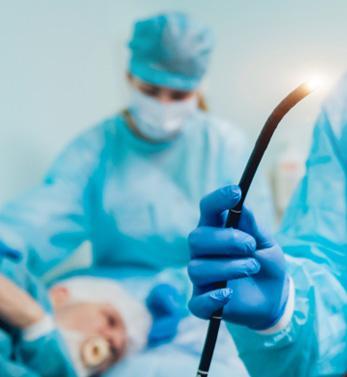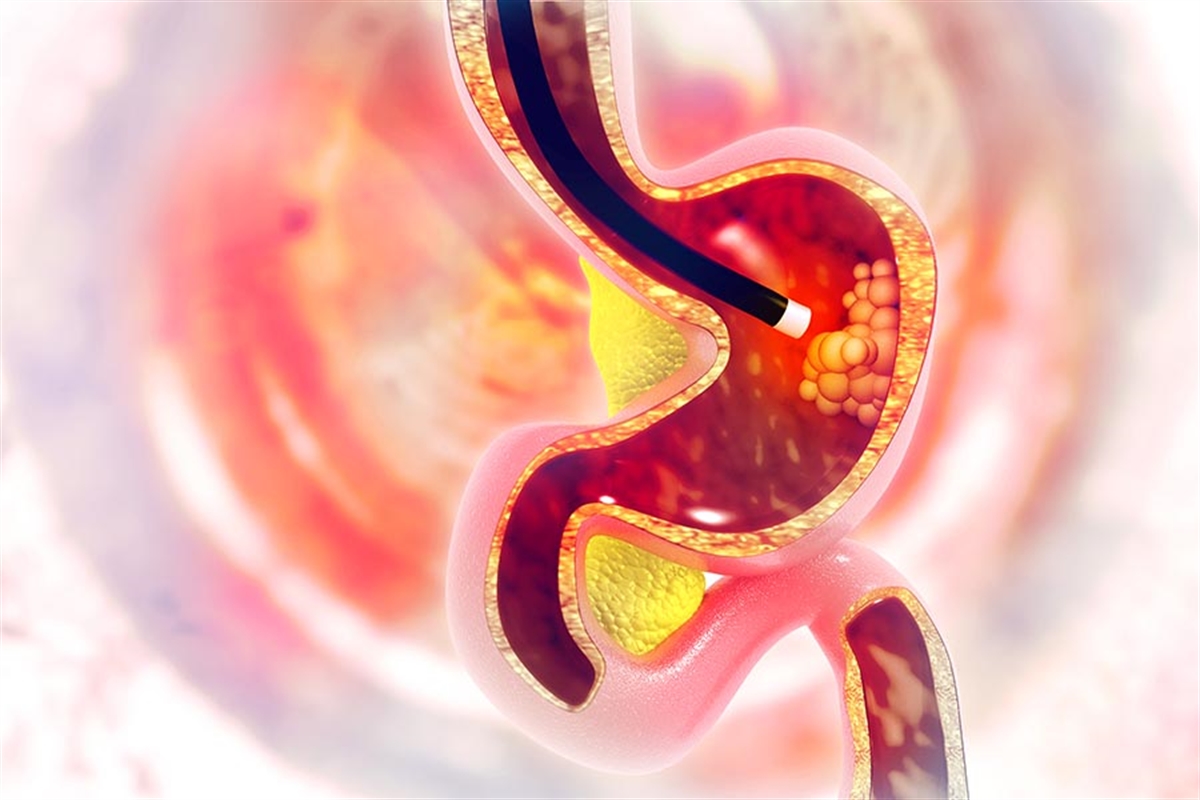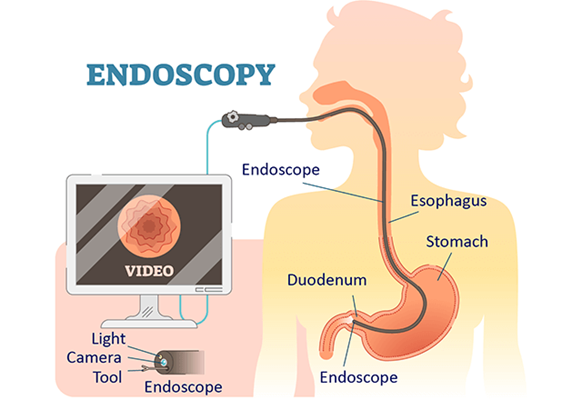

Endoscopy is a non-surgical orally performed procedure to examine the digestive system. It allows the gastroenterology doctor to examine the organ without making an incision in the body. Endoscopy, which is used in the diagnosis and sometimes treatment of disorders in the esophagus, stomach and duodenum, consists of a flexible tube with a camera and light at the end. In some cases, special instruments may be attached to the endoscope to perform a biopsy.
 For diagnostic purposes: Endoscopy can be done due to many symptoms.
For diagnostic purposes: Endoscopy can be done due to many symptoms.
It can be used to investigate the causes of different ailments in the digestive system.
Biopsy: In addition, tissue samples can be taken from the stomach, esophagus and duodenum for biopsy in suspicious cases.
For therapeutic purposes: It can also be used for therapeutic purposes by adding special tools to the endoscopy device. Opening esophageal strictures, draining the accumulated fluid, cutting polyps, removing a foreign object or even removing small organs such as the infected gallbladder can be done with the endoscopy method.
In addition, endoscopy is sometimes combined with other procedures such as ultrasound. An ultrasound probe can be connected to the endoscope with a method called endoscopic ultrasound (EUS). While special images of the esophagus or stomach wall can be obtained, images of hard-to-reach organs such as the pancreas can be obtained more easily and in detail.
 How Is Endoscopy Performed?
How Is Endoscopy Performed?
During the preparation for endoscopy, the stomach should be empty. Therefore, eating and drinking should be stopped for up to eight hours before the endoscopy.
Before the endoscopy procedure, the gastroenterology doctor should be informed about all drugs used. Blood thinners should be discontinued a few days before the endoscopy procedure as they may cause bleeding.
The gastroenterology doctor will make necessary referrals for people with chronic diseases such as diabetes, heart disease or high blood pressure.
In order not to feel pain or discomfort during the endoscopy procedure, sedation methods are applied to relieve the patient before the procedure. For this reason, it is important to have a person who can help the patient after the procedure.
Before the endoscopy procedure, the patient is turned to the left side and the head is rotated 90 degrees. If necessary, electrodes can be attached to the body to monitor the patient's breathing, blood pressure and heart rate.
Before starting the endoscopy procedure, the patient is given a sedative to minimize retching and discomfort.
A plastic mouth guard is used to keep the mouth open. An anesthetic is sprayed into the mouth to numb the throat.
The endoscope is placed in the mouth. Your doctor may ask you to swallow as the endoscope passes through the throat. There may be a feeling of pressure in the throat, but usually no pain is felt.
After the endoscope has passed through the throat, the patient cannot speak but can make sounds. Endoscopy does not interfere with breathing.
During endoscopy, images are transferred to the screen in the examination room. Images of this scanning process in your digestive system are recorded for later review.
Gentle air pressure can be given through the esophagus to inflate the digestive tract. This allows the endoscope to move freely and to examine the folds of the digestive tract more easily. Pressure or fullness may be felt from the added air.
Special surgical instruments can be passed through the endoscope to take a tissue sample or remove a polyp
When the examination is finished, the endoscope is slowly withdrawn from your mouth. An endoscopy usually takes 15 to 30 minutes, depending on the situation.